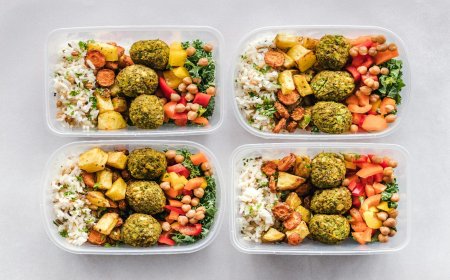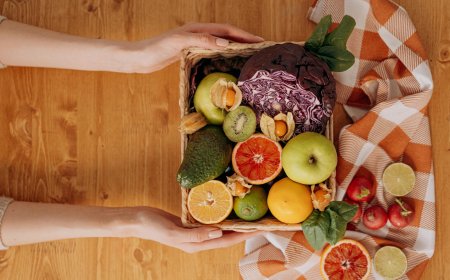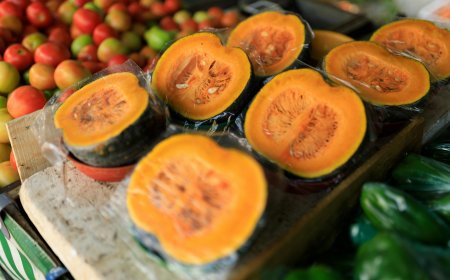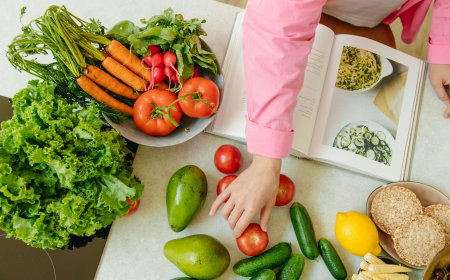Top Food Trends for 2025

By 2025, the food scene will be at an amazing junction of changing consumer tastes, sustainability, and creativity. Many strong trends are changing our eating, cooking, and thinking about food as we negotiate this culinary evolution. From the integration of global flavors to the growth of functional foods and sustainable practices, 2025 promises a dining scene that balances health consciousness with flavor exploration. This thorough examination of new food trends shows not only what we will be eating in the next year but also how these changes mirror more fundamental changes in our connection with food, nutrition, and the earth.
The Global Flavor Revolution
With Southeast Asian cuisines especially shining, the gastronomic scene of 2025 keeps fervent embracing of foreign tastes. Vietnamese and Filipino cuisine is drawing a lot of interest and offering diners sophisticated taste sensations that harmonize sweet, sour, salted, and umami components. From their specialty status, pho, the aromatic Vietnamese soup, and banh mi, the popular sandwich fusion of French and Vietnamese influences, have become mainstream favorites across many markets.
Asian condiments are growing remarkably; items like chili crisp are now pantry basics instead of unusual imports. As consumers become more daring with their taste experimentation, companies including Yep, NOJO, and White Mausu note robust sales trends. Beyond just heat, ingredients like citrussy yuzu, numbing Sichuan peppercorns, and sweet-savory char siu sauce find their way into home cooking across all ethnicities.
In this world, flavors call for less cooking knowledge. Start with a little addition, perhaps a drizzle of chili crisp over eggs or vegetables—or try yuzu in salad dressings as a cool substitute for lemon. While online recipes offer direction for those seeking authenticity-seeking home cooks, the availability of these items in major shops makes research quite easy.
Clean Eating Gets a Modern Twist
In the year 2025, the trend shifts significantly from ultra-processed foods towards simpler, more natural ingredients. This change marks a welcome embracing of cooking principles rather than only a rejection of preservatives and additives. Consumers, especially younger generations swayed by social media debate, show increasing awareness about what goes into their food and drink and favor natural, organic, and minimally processed solutions.
"2025 will see people move away from buying food with additives to cooking more with natural ingredients, in addition to eating more seasonal vegetables and only eating meat and fish on weekends or rare occasions," Chef Theo Randall observes this notable behavioral change”. This moderation in animal product intake reflects both environmental concern and health conscience, therefore producing a balanced approach to contemporary eating.
With Export Development Canada's agri-food specialist Ashley Kanary noting this as the most important trend of the year, the back-to-basics movement also includes cooking and baking from home. Home cooking connects people to food traditions and gives total control over ingredients, providing both emotional gratification and health advantages. Good food and other food delivery businesses have evolved by including these "back-to-basic" components into quick meal solutions that fit hectic schedules and avoid fast-food stigmas.
To follow this trend, think about setting one day each week for from-scratch cooking with full, unprocessed foods. Shopping at farmers' markets for seasonal produce links you to local food systems and guarantees the best taste and nutrition. Establishing a pantry of nutritious grains, beans, and unprocessed spices lays the groundwork for a clean diet free of taste or convenience.
Functional Foods on the Rise
The idea of food as holistic medicine picks great speed in the 2025 food scene. Consumers are choosing foods more and more depending on health advantages connected with particular ingredients rather than only taste or convenience. This functional food trend reflects a comprehensive knowledge of the part nutrition plays in general wellness.
Once thought of as specialized, ingredients with great nutritional richness and health-promoting qualities are becoming popular. Rich in minerals including iron, iodine, and magnesium, sea moss has become well-known as a well-being aid supporting thyroid function and immunity. Compared to conventional leafy greens, aquatic plants such as duckweed (water lentils) are attracting interest due to their quite high protein content.
The health-conscious trend also encompasses awareness of gut health as people hunt meals that support digestive wellness. Fiber especially gets emphasis after protein's journey from specialized interest to mainstream dietary focus. Prebiotic sodas and fiber-enriched flours show how manufacturers responded to this customer focus, which helps to make gut-healthy choices more enticing and easily available.
Including functional foods in your diet is easy. Add a little sea moss gel to soups or smoothies; substitute ancient grains high in fiber for refined substitutes; investigate fermented foods like kimchi and kefir for their probiotic properties. The secret is the slow integration of these components into known recipes instead of drastic dietary changes.
Sustainability on the Plate
Food trends in 2025 are greatly influenced by environmental consciousness; sustainability issues touch everything from packaging and agriculture. From scientific specialty to mainstream industry strategy, regenerative farming techniques—which center on soil health restoration and ecological resilience—have evolved. Now including regenerative agricultural projects into their sustainability strategies, major food companies with a combined worth of more than $3 trillion indicate a dramatic change in production objectives.
After recent supply interruptions, the shift from global supply chains towards local food solutions reflects environmental issues as well as resilience planning. Customers are looking for locally grown food more and more since they value the quality control and lower carbon footprint of surrounding providers. The growing interest in regional specialties reflects this localizing trend: British consumers especially value traditional foods with geographic uniqueness, such as Welsh cakes from Wales and Aberdeen Angus beef from Scotland.
Plant-based choices are still growing steadily as people embrace them for environmental as well as health benefits. The emphasis has changed from basic meat replacement towards gastronomic excellence, with plant-based options prized for their unique virtues rather than sheer likeness to animal goods. Concurrent with this comeback in ethical meat consumption is an emphasis on quality over quantity and more openness on animal welfare and environmental effects.
Through your food choices, give sustainability top priority; prioritize seasonal eating patterns; cut food waste by careful meal planning; select foods with little packaging; and look at local suppliers using farmers' markets and community-supported agricultural projects.
The Luxury of Comfort
The gastronomic situation of 2025 presents an interesting paradox as customers embrace simplicity and search out luxury at the same time. "Luxury comfort" cuisine reflects this duality: easily available, familiar meals enhanced by fine ingredients or advanced cooking methods. For instance, fried chicken combined with caviar and unusual pairings that combine elegance with comfort would be lobster crumpets.
This trend also encompasses retail goods that give regular condiments and gourmet additions. Products like Funky Burger Sauce from King of Feast improved with sun-dried tomatoes and molasses, or Barral-Aged Buffalo Hot Sauce from Big Jim's Kitchen show this premium approach to traditional tastes. These products let customers enjoy restaurant-quality luxury right at home without needing sophisticated cooking techniques.
With traditional foods reinterpreted via modern sensibilities, nostalgia is a major component in this comfort food revolution. The emotional link to familiar meals satisfies the need for novelty and produces experiences that seem both creative and soothing.
Including this trend may mean utilizing heritage-breed meats in a classic stew recipe or finishing a homemade mac and cheese with truffle oil or black garlic. The method enhances daily meals without total reinventions and makes extraordinary events more memorable.
2025 trends in food show an effective change in our attitude to cooking, eating, and understanding of culinary experiences. While the return to pure ingredients and cooking techniques ground us in history, global flavors keep broadening our palates. While sustainability factors guarantee our food choices assist planetary health alongside personal well-being, functional foods help to close the gap between nutrition and wellness. The trend in luxury comfort reminds us that eating still provides joy and connection even as we seek better, more conscientious choices.
We may savor the best of what 2025's food scene has to offer by carefully including these trends in our daily lives – maybe through weekly searches of new ingredients, fresh dedication to cooking from scratch, or slow movements towards more sustainable food choices. These trends are beautiful because they are accessible; they don't call for special ingredients or cooking knowledge; rather, they call for openness to change our connection with food. These themes will surely keep changing as we negotiate 2025, but their roots in health, sustainability, and culinary discovery offer a convincing road map for significant eating experiences.
What's Your Reaction?
 Like
0
Like
0
 Dislike
0
Dislike
0
 Love
0
Love
0
 Funny
0
Funny
0
 Angry
0
Angry
0
 Sad
0
Sad
0
 Wow
0
Wow
0






























